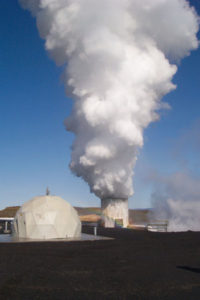Can This Fill the Solar/Wind Gap in Renewables?

This COULD be very exciting, a breakthrough in evening the highly variable load capacity of renewables (depending on how much sun is shining and how much wind is blowing).
BUT…
1) It essentially repurposes fracking technology, which has been linked to huge environmental problems from water contamination to accidentally induced earthquakes. The article does (eventually) touch on the earthquake risk, but makes it sound like that problem has been eliminated. As far as I know, both of these issues are still real.
2) The article does not address the consequences if the water pressure buildup gets out of control. What happens if there are explosions in the drill cavity, which can extend 8000 feet deep and 4000 feet (about 3/4 of a mile) long.
Still, I’m glad to see people exploring this, and potentially making geothermal economically viable in places it’s hasn’t been until now.
PS: I visited Iceland in 2011. Pretty much the entire country’s non-vehicular energy use is renewable: a mix of volcano-based geothermal and large-scale hydro. And it was exporting power to mainland Europe!
